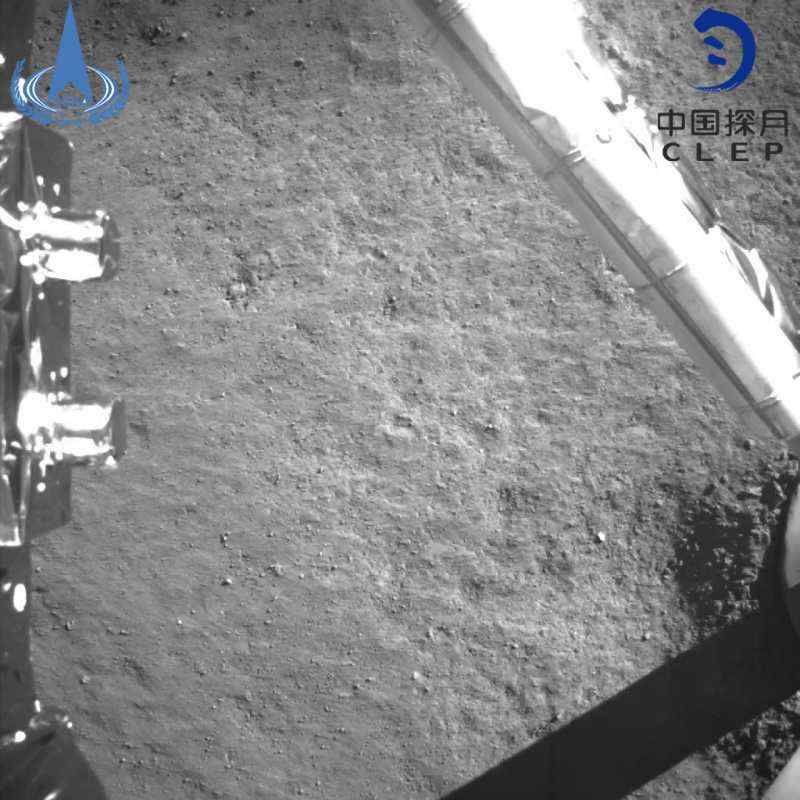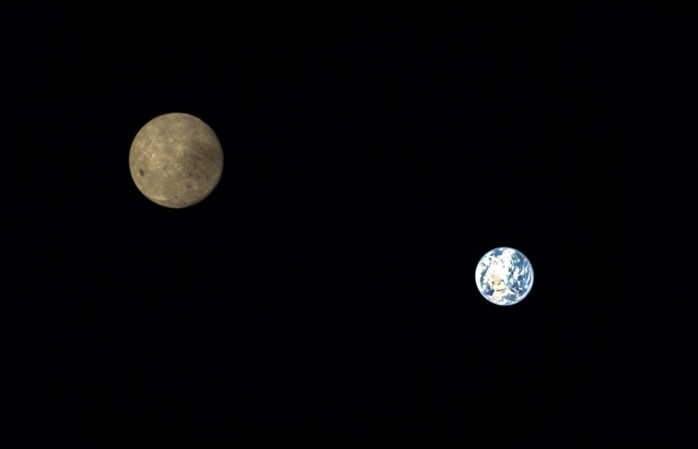“Eye” on the far side of the moon
At 10:26 am Beijing time on Jan. 3, 2019, China’s Chang’e 4 probe (named after a famous Chinese Goddess of the moon) became the first to land on the far side of the moon in a historic moment for human space exploration.
“It is when the image of the landing of Chang’e 4 probe was successfully transmitted to the earth that my pounding heart eventually calmed down,” said Prof. XU Zhihai from the College of Optical Science and Engineering.
The close-up image of the landing was captured by the lens of the Landing Camera (LCAM) deployed on the spacecraft. This lens was developed by a research team headed up by Prof. XU Zhihai.
 This picture (right) is the first sight of Chang’e 4 probe on the far side of the moon at CCTV Evening News.
This picture (right) is the first sight of Chang’e 4 probe on the far side of the moon at CCTV Evening News.
During the landing of Chang’e 4 probe, the lens of the LCAM was the “eye” that observed the moon, which helped the probe make precise judgments about the surface of the moon, stay clear of those “dangerous areas” and select a safe landing site.
“On the surface of the moon are many slopes and craters. This small ‘eye’ plays a crucial role for Chang’e 4 to land on the ‘perilous’ lunar surface. The space is teeming with a myriad of radiations, so the lens of the small ‘eye’ is made of radiation-proof glass. Its body tube is made of titanium alloys featured by high strength, high rigidity, light weight and a similar thermal expansion rate to glass, thus ensuring that this small ‘eye’ can take high-resolution photos even in extreme environments,” XU Zhihai said.
In addition to the LCAM, the research team developed the only optical camera system for the Queqiao (named after a love bridge in Chinese mythology) relay satellite, which provided telecommunications support for Chang’e 4 lander and rover.
“This camera system consists of three parts—a dual-resolution camera, an antenna monitoring camera and a camera controller,” said XU Zhihai, “It weighs less than three kilograms, thus reducing much weight and saving room for other effective payloads.”
The antenna monitoring camera is able to capture the opening of the antenna mounted on the Queqiao relay satellite. Whether or not Chang’e 4 can transmit signals to the earth is contingent upon whether or not the antenna can work properly.
The dual-resolution camera is also very challenging. In space, the research team innovated this device in an effort to satisfy the demands for high-resolution and large-FOV imaging in a camera and avoid the baffling question regarding the use of zoom lens. This camera also took the first picture of the earth and the moon from the Lagrange L2 point.

“We will conduct follow-up experiments on the camera system for the relay satellite in the later part of 2019. There is a lot more to look forward to,” said XU Zhihai.